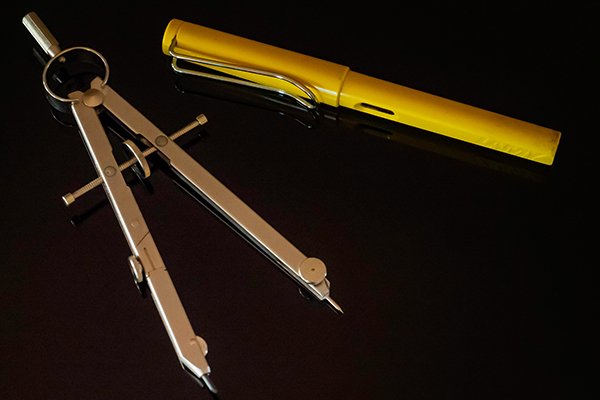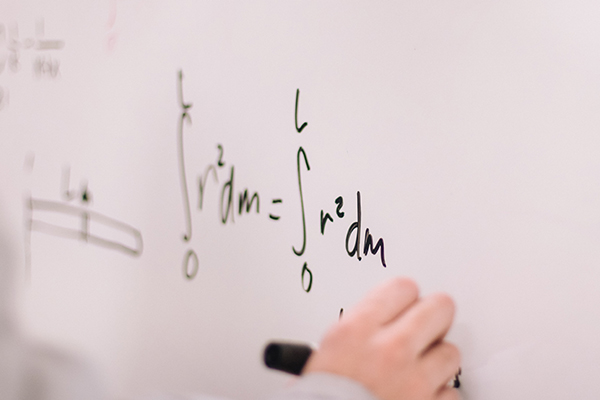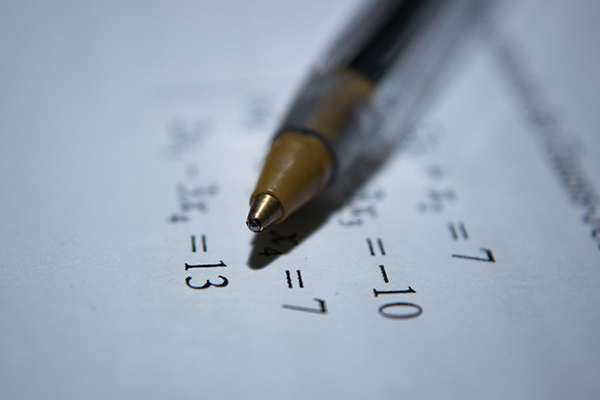University of Toronto Practice Midterm 1 (Fall 2019) Solutions
Instructions:
•This examination consists of ?? questions for a total of ?? points.
•You have one hour and fifty minutes to complete this examination.
•No aids are permitted. Do not use books, notes, calculators, computers, tablets or phones.
•Write legibly and darkly.
•Cross out any work that you do not wish to have scored.
•Show all of your work. Unsupported answers may not earn credit.
1.Complete the following sentences with a mathematically correct definition. No marks will be awarded for a “close” but incorrect definition.
(a)(2 points) The vector -v is in the span of -v1, -v2, -v3, -v4 if there exist scalars a1, a2, a3, a4 such that
-v = a1-v1 + a2-v2 + a3-v3 + a4-v4.
(b)(2 points) The set {-a,-b} is linearly independent if the equality s-a + t-b = -0 only holds when s = t = 0.
(c)(2 points) A system of linear equations is consistent if there is at least one solution.
(d)(2 points) The vectors -a and -b are in the same direction if there is a scalar k so that -a = k-b or -b = k-a.
(e)(2 points) The vector w- is a non-negative linear combination of the vectors -u and -v if
there exists non-negative real numbers r, s such that w- = r-u + s-v.
2.Let P ⊆ R3 be the plane with equation 3x + 4y − 5z = 4 and let Q ⊆ R3 be the plane with equation
−2x − y − 3z = −1. Let /i be the intersection of P and Q.
(a)(4 points) Write P and Q in vector form.
We need to find three points on , respectively. We first do this for . Setting z = 0, we see
0
that x = 0, y = 1, z = 0 is a solution, giving the vector 1. Setting y = 0, we find the solution
8
x = 8, y = 0, z = 4, giving the vector 0. We find that x = 3, y = 0, z = 1 is also a solution,
3
giving the vector 0. Taking differences, we find two direction vectors
0 8 −8
and
0 4 −4
3 8 −5
which gives a vector form of P:
1 4 −3
−8 −5 1
0 −1
−4 −3 −2
2
0 1 −1
1
−2
0
−1 1 0
Note that there are other vector forms!
(b)(4 points) Write /i in vector form.
The line /i is determined by the two equations 3x + 4y 5z = 4 and 2x y 3z = 1. We deduce that
and
which implies
0 = 4 + 4(−1) = (3x + 4y − 5z) + 4(−2x − y − 3z) = −5x − 17z
5 = 2(4) + 3(−1) = 2(3x + 4y − 5z) + 3(−2x − y − 3z) = 5y − 19z,
17
x = − 5 z, y =
and hence leads to a vector form for /i of
19
z + 1
5
−17 0
-x = t 19 + 1
(c)(4 points) Is there a line /i2, parallel to /i, so that /i2 and /i2 = ? If so, specify /i2 in vector form. Otherwise, explain why there is no such line.
First of all, we choose one point p- such that p- ∈ P but p- ∈/ Q. For example, we can choose
3
1
Then we take /i2 to be the unique line parallel to /i that passes through p-. We can take a vector form of /i2 to be
−17 3
-x = t 19 + 0 .
We have /i2 ⊆ P as /i2 passes through one point p- ∈ P and the direction vector of /i2 (the same as /i) is a linear combination of any two direction vectors of P. On the other hand, if /i2 ∩ Q is nonempty, then we must have /i2 ⊆ Q as the direction vector of /i2 (the same as /i) is a linear combination of any two direction vectors of Q, which is a contradiction since we have p- ∈ /i2 but p- ∈/ Q.
3.For each of the following, give an example if possible. Otherwise, explain why it is impossible.
(a)(2 points) A system of three linear equations in the variables x1, x2 and x3 that is inconsistent.
x1 + x2 = 2
x2 + x3 = 2
x1 − x3 = 2
(b)(2 points) A system of one linear equation in the variables x1 and x2 that has exactly two solutions. This is impossible! Any convex linear combination of two solutions of the equation is a solution to the same equation. As a result, if the equation has two distinct solutions, it must have infinitely many distinct solutions.
(c)(2 points) A set X such that span(X) consists of one vector. We can take X = {} or X = {-0}.
(d)(2 points) A set Y such that span(Y ) consists of two vectors.
This is impossible! If span(Y ) has more than one vector, then there must be one non-zero vector inside Y , which implies that span(Y ) has infinitely many vectors inside.
(e)(2 points) A vector -v ∈ R2 satisfying I-vI < −2.
This is impossible! The norm of a vector is always non-negative.
(f)(2 points) Distinct vectors -a,-b, -c ∈ R4 such that span{-a,-b} = span{-c}. We can take
1 2 3
-a = , b = , -c = .
4.Let A = [-v1|-v2|-v3|-v4] be the matrix whose columns are -v1, -v2, -v3, -v4. You know the following
2
8
8
?
1 0 0 π
-v1 = 3 -v2 = 1 -v3 = 4 -v4 = ? rref(A) = 0 1 0 π3
Hint: you do not need to do any additional row reduction to answer any part of this question.
(a)(2 points) Express -v4 as a linear combination of -v1, -v2, and -v3, if possible. Otherwise, explain why no such linear combination exists.
Assume that we have
x1-v1 + x2-v2 + x3-v3 = -v4
for some x1, x2, x3 R. Then x1, x2, x3 is the solution to the system of linear equation correspond- ing to A. We can read off this solution from rref(A), and so x1 = π, x2 = π3, x3 = π5. As a result, we have
-v4 = π-v1 + π3-v2 + π5-v3
(b)(2 points) Express -v3 as a linear combination of -v1 and -v2, if possible. Otherwise, explain why no such linear combination exists.
This is impossible! The left three columns of A are linearly dependent if and only if the left three column of rref(A) are linearly dependent. It is clear that the left three columns of rref(A) are linearly independent, which implies that -v1, -v2, -v3 are linearly independent as they can be identified with the left three columns of A.
(c)(3 points) Let B = [-v2 -v1 -v3 -v4] be the matrix A with the first two columns swapped. Write down
rref(B). No explanation necessary.
We have
1 0 0 π3
rref(B) = 0 1 0 π
0 0 1 π5
5.Jack and Tammy are arguing about the solution set X ⊆ R3 to x = y = z.
Jack says: Since the solution set to x = y is a plane and the solution set to y = z is a plane, X must be the union of two planes.
Tammy disagrees: The equation x = y = z means the coordinates of every point must be equal, and so X = {(0, 0, 0)}.
Explain to Jack and Tammy, using complete English sentences, whether what X looks like. Your explanation must explain where the reasoning of Jack and Tammy is correct/incorrect.
Jack is incorrect. The set described by the equations x = y = z is the intersection of the plane x = y
with the plane y = z, rather than their union. As well, Tammy is incorrect.
X = (x, y, z) : x = y = z means the following: given a point in X, all of its coordinate are the same. However, if we consider different points in the set X, the value of x (or y or z) can definitely vary.
A correct answer to the question is the following: The set X is a line in R3 passing through the origin. We can express X by
1
X = -x = t 1 , for some t ∈ R
or in vector form as
1
1
or as span as
X : -x = t 1
1
span
1 .
6.Let A ⊆ R4 be the line in vector form described by
1
1
-x = t + .
(a)(2 points) Write A as a set (e.g., using set-builder notation).
1 1
A = -x : -x = t + , for some t ∈ R .
(b)(2 points) Write down a system of linear equations whose solution set is A. If we write a vector -x as
x1
x4
then the set A can be described as the solution to the following equations
2×1 − x2 = 1
4×1 − x4 = 3
(c)(2 points) P ⊆ R4 is a plane. You know the following about P: (i) P can be written as a span,
(ii) (3, 3, 3, 4) ∈ P, (iii) P ∩ A = {}. Describe P in vector form.
As R4 is a plane, is determined by two direction vectors d-1, d-2 and one extra vector p- via the vector form
P : -x = s1d-1 + s2d-2 + p-.
It follows from (i) that -0 ∈ P and thus we can take p- = -0. It follows then from (ii) that
3 3
= − -0
is a direction vector of P, and hence we may take
3
d-1
3
= 3 .
4
According to our assumption that d-1 and d-2 are two direction vectors for , they are linearly independent. If the following three vectors
1
d , d ,
are linearly dependent, then A would be parallel to the plane P and so either A ∩ P = A or
A ∩ P = {}. Motivated by this, we will chooose d- , d- so that d , d , is linearly dependent,
1
1 2 1 2 3
1
which implies that is a linear combination of d
and d- . In particular, we can choose d-
=
3
4
and deduce a vector form for P of
1
3
2
1
2 3
-x = s
3
1 3 + s
4
2
2 3 .
4
1
Finally, we verify that indeed P ∩ A = {} seeing that 1 ∈/ A ∩ P .
7.Let
-a = 「1l -b = 「−1l -c = 「2l X = {-a,-b} Y = {-b, -c}.
0 −3
Draw the following subsets of R2.
(a)(2 points) X ∪ Y
6
(c) (2 points) Y ∩ span(X)
(b)(2 points) (span(Y ) + X) + Y
(d) (2 points) W = {all convex linear combina- tions of -a and -b} ∪ {-c}
8.For the following questions, circle INDEPENDENT if the set is linearly independent or DEPEN- DENT if the set is linearly dependent; circle CANNOT DETERMINE if it cannot be determined whether the set is linearly independent or linearly dependent. No explanation is needed.
(a)(2 points) {「3l , 「 4 l1 ⊆ R2
1 −1
INDEPENDENT DEPENDENT CANNOT DETERMINE
(b)(2 points) {-a,-b, -c, d-} ⊆ R3 for unknown -a,-b, -c, d- ∈ R3.
INDEPENDENT DEPENDENT CANNOT DETERMINE
(c)(2 points) {-a} ⊆ R2 for unknown -a ∈ R2.
INDEPENDENT DEPENDENT CANNOT DETERMINE
(d)(2 points) {-x + -y, 3-x − 4-y} ⊆ R11 where {-x, -y} ⊆ R11 is a linearly independent set.
INDEPENDENT DEPENDENT CANNOT DETERMINE
(e)(2 points) {-x + -y, π-x + π-y} ⊆ R4 where {-x, -y} ⊆ R4 is a linearly independent set.
INDEPENDENT DEPENDENT CANNOT DETERMINE
(f)(2 points) span{-x, -y} ⊆ R5 where -x, -y ∈ R4 are not scalar multiples of one another.
INDEPENDENT DEPENDENT CANNOT DETERMINE
(g)(2 points) {-x, -y} ⊆ R2 where -x, -y ∈ /i for some line /i ⊆ R2.
INDEPENDENT DEPENDENT CANNOT DETERMINE
9.This question concerns orthogonal vectors.
(a)(3 points) Find a set of four vectors in R3 which are pairwise orthogonal, or explain why no such set exists. (Recall, a set X is pairwise orthogonal if for every pair of distinct vectors -a,-b X, we have -a is orthogonal to -b.)
We can take the following four vectors
1 0 0 0
0 , 1 , 0 , 0 .
(b)(3 points) Suppose that {-u, -v, w- } ⊆ R3 is a set of vectors of length 2 which are pairwise orthogonal.
Let -z = c-u + b-v + aw-
largest? Explain.
where a > b > c > 0. Which number out of -u · -z, -v · -z, and w- · -z is the
We compute directly that
and similarly
-u · -z = c-u · -u + b-u · -v + a-u · w- = c-u · -u = 4c
Hence we deduce that
-v · -z = 4b,
w- · -z = 4a.
since we have a > b > c.
w- · -z > -v · -z > -u · -z
(c)(3 points) Is the set {-u, -v, w- } linearly independent or linearly dependent? Justify your answer.
We consider scalars x, y, z ∈ R such that
x-u + y-v + zw- = -0.
If we take the dot product of -u with the equation above, we get
0 = -u · -0 = x-u · -u + y-u · -v + z-u · w- = x-u · -u = 4x.
Taking the dot product with -v and w- gives 0 = 4y and 0 = 4z. As a result, we must have
x = y = z = 0 and hence -u, -v, w- are linearly independent.
10.This question involves reading and applying a new definition.
Definition. A vector -v ∈ R2 is called (w1, w2)-non-square, if -v · w-
some x ∈ Z).
is not a square (i.e., equal to x2 for
(a)(3 points) If possible, give an example of a vector -a that is (4, 4)-non-square. Otherwise, explain why it is not possible. You must justify your answer.
We may take -a = 「1l in which case we have
which is not a square.
-a · 「4l = 8
(b)(3 points) If possible, give an example of a vector -b that is not (4, 4)-non-square. Otherwise, explain why it is not possible. You must justify your answer.
We may take -a = 「1l in which case we have
-a · 「4l = 4
which is a square. In other words, -a is not (4, 4)-non-square.
(c)(3 points) Is it possible to find two linearly independent vectors, -u = (u1, u2) and -v = (v1, v2) with
u , u , v , v ∈ Z, so that -a = 「1l is both -u-non-square and -v-non-square? Justify your answer.
It suffices to find four integers u1, u2, v2, v2 Z such that neither u1 + u2 nor v1 + v2 is a square and moreover -u, -v is linearly independent. Taking u1 = u2 = v1 = 1 and v2 = 2 gives such an example.
YOU MUST SUBMIT THIS PAGE.
If you would like work on this page scored, then clearly indicate to which question the work belongs and indicate on the page containing the original question that there is work on this page to score.
YOU MUST SUBMIT THIS PAGE.
If you would like work on this page scored, then clearly indicate to which question the work belongs and indicate on the page containing the original question that there is work on this page to score.
YOU MUST SUBMIT THIS PAGE.
If you would like work on this page scored, then clearly indicate to which question the work belongs and indicate on the page containing the original question that there is work on this page to score.





Leave A Comment